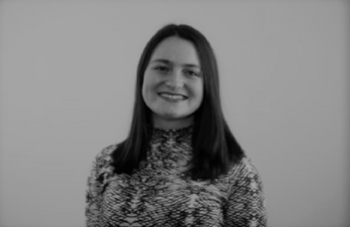US colleges are telling students to read this book, so we found out why
The author looks to provide readers with a clear understanding of racist and antiracist definitions.
Many college students are being required to read "How To Be an Antiracist" as classes resume.
In doing so, he defends affirmative action, upholds feminism, and slams capitalism.
As students prepare to return to classes this fall, universities nationwide have been encouraging students to read the best-selling book How To Be an Antiracist by Boston University Professor and Director of the Center for Antiracist Research Ibram X. Kendi.
“We know how to be racist. We know how to pretend to be not racist. Now let’s know how to be antiracist,” Kendi, whose book skyrocketed to the top of virtually every bestselling book chart in the wake of recent race protests and riots, writes in the 2019 nonfiction piece. Each chapter of the book is dedicated to defining a specific type of racism, offering “lucid definitions of racism/antiracism, racist/antiracist policies, racist/antiracist ideas, racist/antiracist people.”
Accordingly, Kendi begins by stating that “the only remedy to racist discrimination is antiracist discrimination. The only remedy to past discrimination is present discrimination. The only remedy to present discrimination is future discrimination.”
[RELATED: Know any college students stuck at home? Send them this anti-socialist reading list]
Kendi pushes back on the notion that the act of discriminating against an individual on the basis of race is an inherently racist act of itself.
Rather, he says “the defining question is whether the discrimination is creating equity or inequity. If discrimination is creating equity, then it is antiracist. If discrimination is creating inequity, then it is racist.”
”Someone reproducing inequity through permanently assisting an overrepresented racial group into wealth and power is entirely different than someone challenging that inequity by temporarily assisting an underrepresented racial group into relative wealth and power until equity is reached,” Kendi writes.
Racism is not the result of “ignorance and hate,” but it rather stems from “self-interest of racist power,” Kendi explains. He says that people in positions of power have first implemented racist policies, and have then gone on to justify them with racist ideas to “redirect the blame for their era’s racial inequities away from those policies and onto people.”
Kendi defines “racist” as one who supports racist policies either through their “actions or inactions.”
[RELATED: Universities across America want students to read this book. We did it for you.]
The book explains that people can either be assimilationists who “believe that people of color can, in fact, be developed, become fully human, just like White people,” segregationists who believe that people of color are “incapable of becoming White and therefore fully human,” or antiracists.
To become an antiracist, Kendi contends, one must “emancipate oneself from the dueling consciousness” and recognize that “there is no such thing as the American body, only American bodies, racialized by power.” While Kendi writes that White people can be antiracists, oftentimes they are “the frequent victimizers of people of color and the frequent victims of racist power.”
Kendi then goes on to describe specific types of racism.
He focuses on the idea of “class racism,” stating that “capitalism is essentially racist; racism is essentially capitalist.”
Columbia University philosophy student Coleman Hughes criticized Kendi’s assertion about capitalism in an opinion editorial for City Journal, writing, “To test this claim, a careful thinker might compare racism in capitalist countries with racism in socialist/Communist ones; or he might compare racism in the private sector with racism in the public sector. Kendi does neither.”
Kendi notes that racism is also embedded into gender, for “to truly be antiracist is to be feminist.” Similarly, he writes that “to be queer antiracist is to serve as an ally to transgender people, to intersex people, to women, to the non-gender-conforming, to homosexuals, to their intersections.”
Follow the author of this article on Twitter: @KestecherLacey

